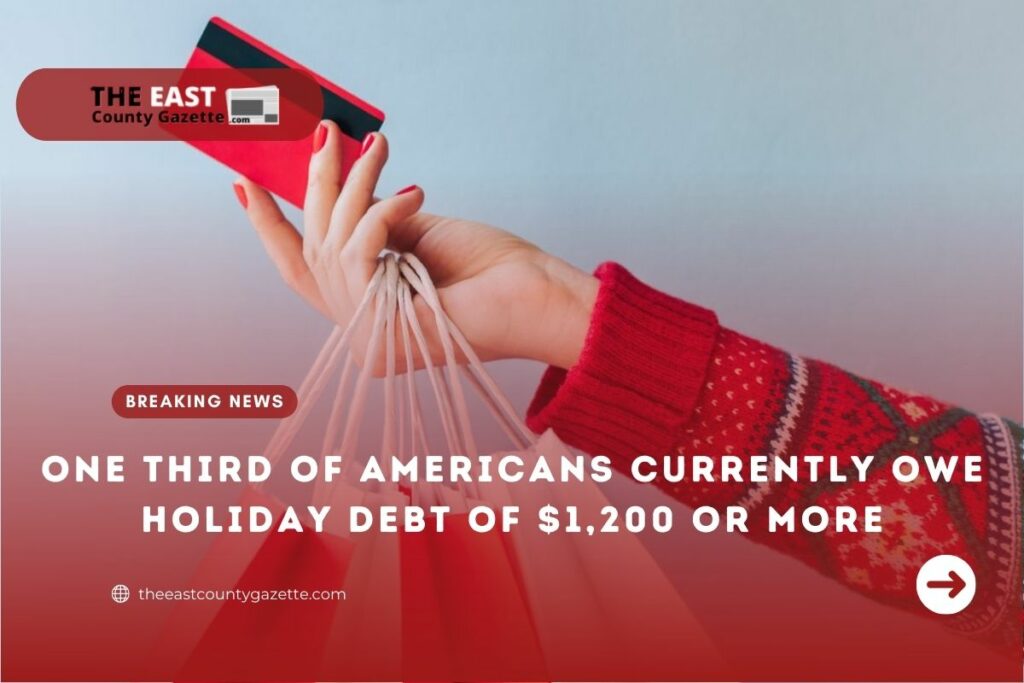The average American credit card debt this holiday season is $1,249. American shoppers put their purchases on credit cards, took out personal loans, and used buy now, pay later financing, more than a third (36%) of them incurred debts.
According to Marketwatch, a study conducted by LendingTree on behalf of its annual holiday debt report shows that more than 2,000 U.S. consumers surveyed between Dec. 14-20, 2021, reported the latter statistic. Holiday debt took on a larger share of people this year than in 2020 when 31% of people had a debt problem heading into the new year.
One bright spot for 2021 is that debt amounts decreased 10% from $1,381 last year — perhaps because those affected by the COVID-19 pandemic decided not to borrow as much as they would have otherwise.
Almost half of the surveyed consumers (48%) expressed ‘dread’ about the holidays due to the costs associated with decorating, buying gifts, and hosting family feasts, according to a previous LendingTree survey.
In fact, 41% of respondents expected to incur shopping debt this holiday season, especially as 13% still owed money from last year’s holiday shopping spree.
The National Retail Federation predicts that shoppers will spend $998 on gifts, food, and decorations this winter. This figure is similar to last year’s figures.
Also check: US Reports Lowest Population Growth Rate in Decades
LendingTree also analyzed which American consumers added the most debt to their debt load this year.
The fact that holiday debt is most likely to occur among parents with children under 18 should come as no surprise. A majority (54%) reported incurring holiday debt in this situation.
“The pressure on parents from kids, friends, relatives and from society, in general, to give until it hurts during the holidays is very real,” LendingTree’s chief credit analyst Matt Schulz said in a statement.
More than half of millennials reported accruing more debt in December. This might be due to young people living paycheck to paycheck while paying off their student loans and saving up for milestones like a home purchase, Schulz suggested.
“Millennials aren’t college kids anymore,” he stated. “Many are getting married and starting families, and those things are really expensive. When you factor in inflation, it’s an even bigger issue.”
A median of $1,462 was borrowed by both millennials and parents with children under 18, a $213 increase over the average debt incurred by all respondents.
Credit cards remain the most popular form of holiday debt, with 62% of borrowers putting their purchases on plastic, not including store credit cards.
With 62% of borrowers using credit cards, not including store credit cards, this form of borrowing remains the most popular.
The New York Federal Reserve’s third-quarter report on household debt and credit show that Americans have been spending as much as ever on their credit cards even before the holidays. According to the study, household debt increased to $15.24 trillion in the third quarter by $286 billion. Probably the biggest contributor to the rise in credit card usage was a shift in mortgage balances as borrowers borrowed larger mortgages while home prices rose. Because mortgage payments took up more of their paychecks, Americans turned to credit cards to settle other bills.
APT -3.43%, Afterpay, and Klarna have both become more popular buy now, pay later (BNPL) options as well. LendingTree found that almost 40% of respondents paid for their gifts and trimmings with BNPL, up from 37% a year ago.
According to marketing insights agency C+R Research, 60 percent of U.S. adults have used BNPL services. Four out of five of those who use BNPL recently said they planned to use it to buy holiday gifts.
“They’re easy to get, give you a little bit of extra time to pay for something without any extra costs, are predictable and don’t leave you in the end with a lot of extra credit that could become debt in the future,” Schulz explained
It is possible for shoppers to get over their heads in BNPL debts even if they don’t realize it, according to financial experts. Regardless, some tips for how to use buy now, pay later services responsibly as well as things to consider before using them.
Is it really so bad if you incurred more debt this holiday season and you don’t want to carry that balance with you for six months in the new year?
Must read: Student Debt Cancellation is Insult to Millions of Americans. Here’s Why?
Personal finance experts say one of the best things you can do to get out of debt is to decide on a plan and stay focused. A very good strategy includes the snowball method. Paying off the cards with higher rates first, according to experts, will prevent you from having to make larger interest payments later on. Moreso, eliminating low-interest debt first bestows a boost psychologically that gives the courage to do more on paying debts.

